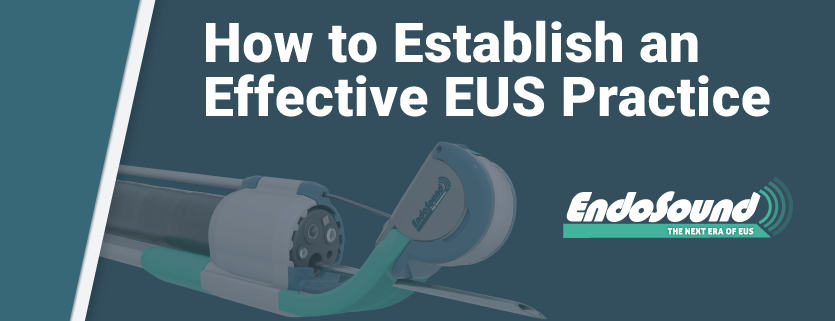A patient with unexplained, chronic abdominal pain has struggled for months to find the cause of his discomfort. His physicians suspect something serious, and order an endoscopic ultrasound for further examination.
Without a local option for care, the man is stuck waiting months for an appointment and must travel hours for the advanced endoscopic procedure. While most patients prefer to be seen in ambulatory surgical centers (ASCs) due to convenience and, often, lower costs, EUS is not always readily available in ASCs.
Unfortunately, barriers to bringing EUS to ASCs or outpatient clinics include limited training opportunities for physicians – especially post-fellowship – and equipment costs for ASCs and outpatient centers. But, bringing the procedure to your practice can drive revenue and significantly help patients in the community.
There are always questions about if a group should start an EUS program, but once that decision is “Yes”, the new set of questions becomes “How”. So, if a physician who is already trained in EUS is thinking about starting in another setting, then here is an outline of how to get it done:
Explore:
Take stock and determine if EUS is the right fit for your practice and community.
A team of representatives from gastroenterology, nursing, materials management, pathology, radiology, procurement and medical device reprocessing should collaborate to determine goals of an EUS program, the target patient population and the overall implementation plan. The team will also need to analyze the current availability of adequate resources (budget, equipment, trained personnel, reprocessing facilities, etc.) to implement an advanced procedure like EUS in your practice, and/or what will need further investment.
Plan:
Develop an implementation timeline complete with short-, medium- and long-term goals and measures for success.
The implementation plan should include how your team will meet training requirements, acquire equipment and market the new offering to the community. Post-fellowship training fellowships are available for endoscopists seeking to gain competency in EUS. Reprocessing personnel also require training on proper handling and cleaning of specialized endoscopes. All credentialling requirements must be met as well.
Implement:
Install equipment and train appropriate staff to cover all aspects of procedure, from preparation, to anesthesia, to performance, to reprocessing of endoscopes to follow-up care.
An advanced endoscopic procedure such as EUS requires a large amount of institutional support to be performed successfully. Facilities may choose to engage with medical device manufacturer clinical support teams, especially with using new equipment and setting up brand-new services. The needs of additional stakeholders, like anesthesia and radiology, should also be factored into implementation timelines and plans.
Review:
After successfully launching EUS as part of your practice, take time to review what went well and what could be improved for both team members and patients.
No new program implementation will ever be perfect, and this is a good time to review all procedures and protocols to ensure all patient and department needs are met. Additionally, the implementation team described above can determine future clinical needs for continued operation and expansion of a successful EUS program.
“EUS program leaders and healthcare administrators must work collaboratively to measure preestablished metrics of success, operationalize identified opportunities for improvement, and regularly evaluate the overall clinical care system,” according to an article in the January 2022 edition of Endoscopic Ultrasound about establishing EUS in practice. “[EUS] programs require a comprehensive and interprofessional approach to strategic planning, goal setting, implementation, training, and program maintenance.”

